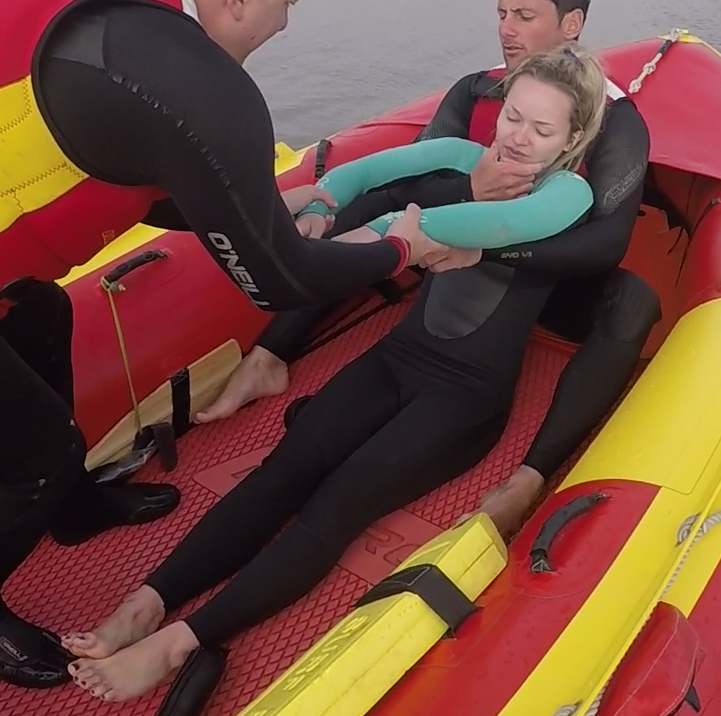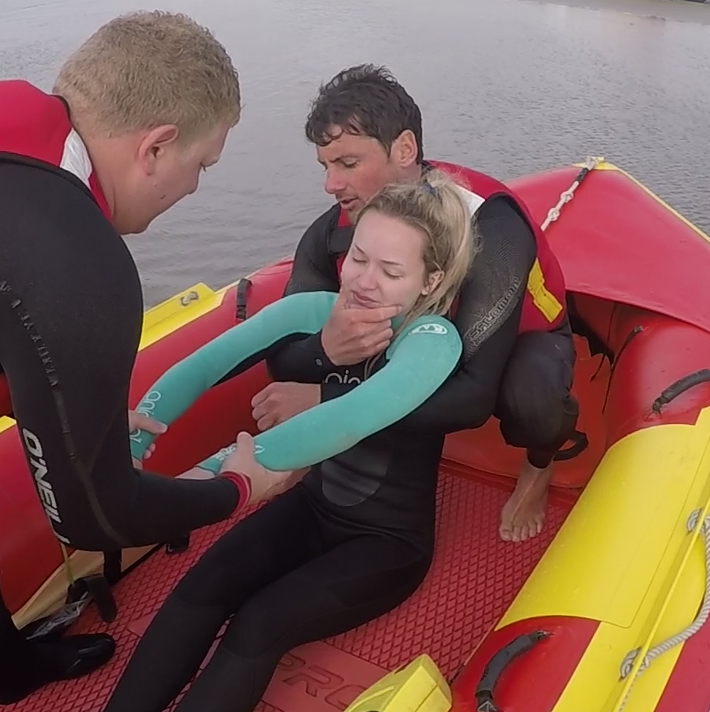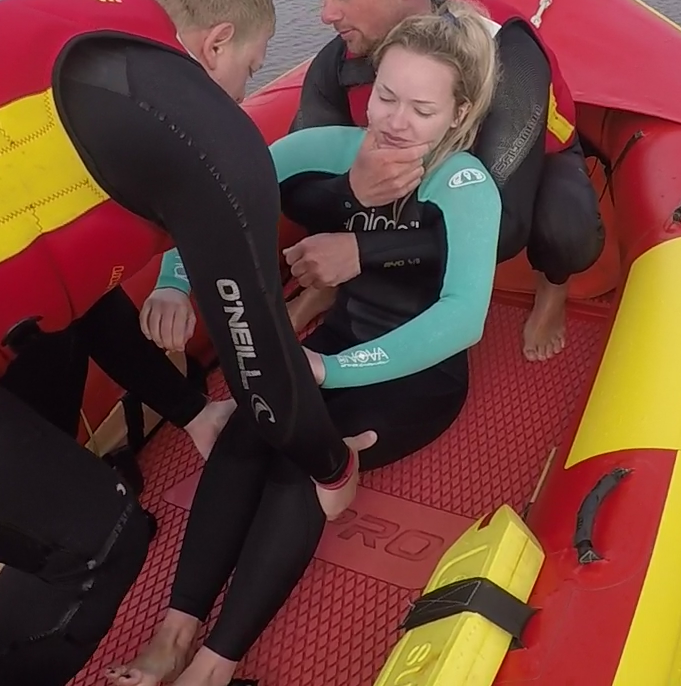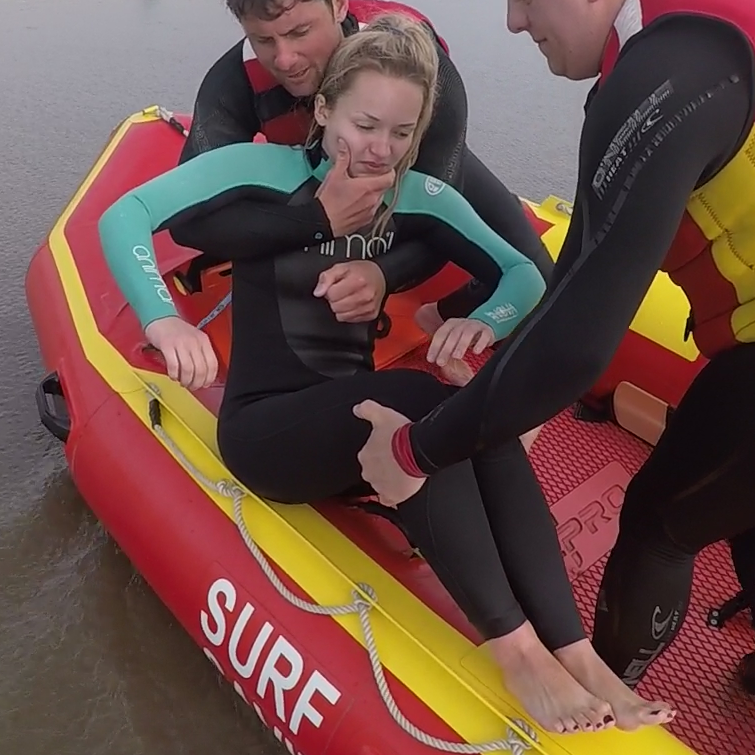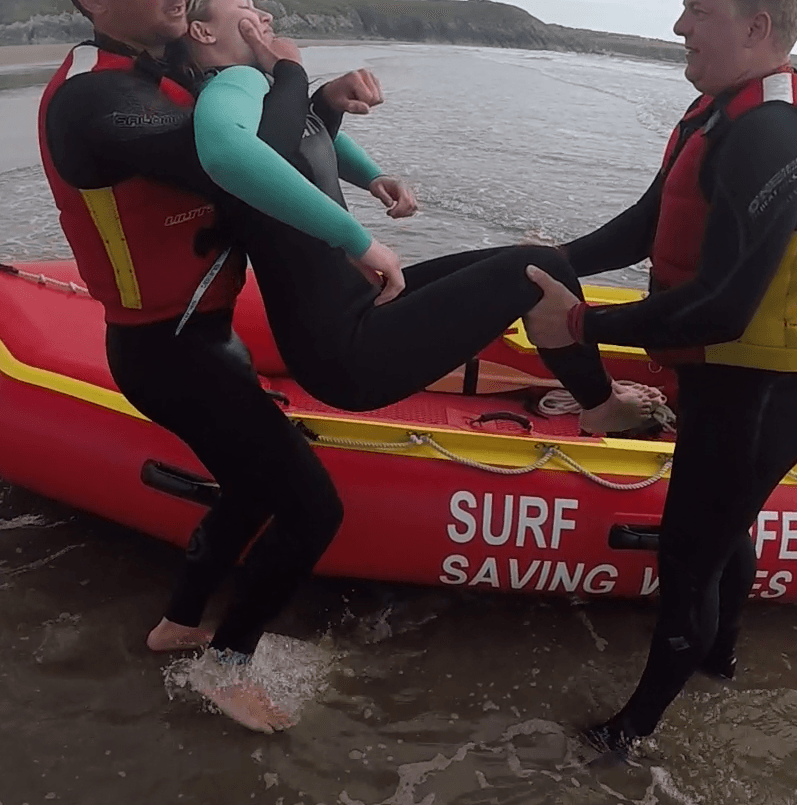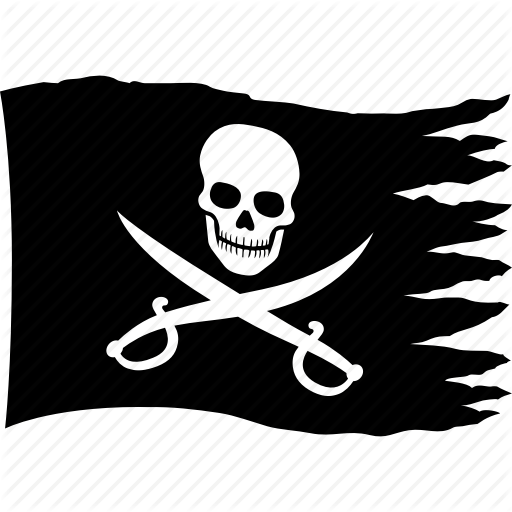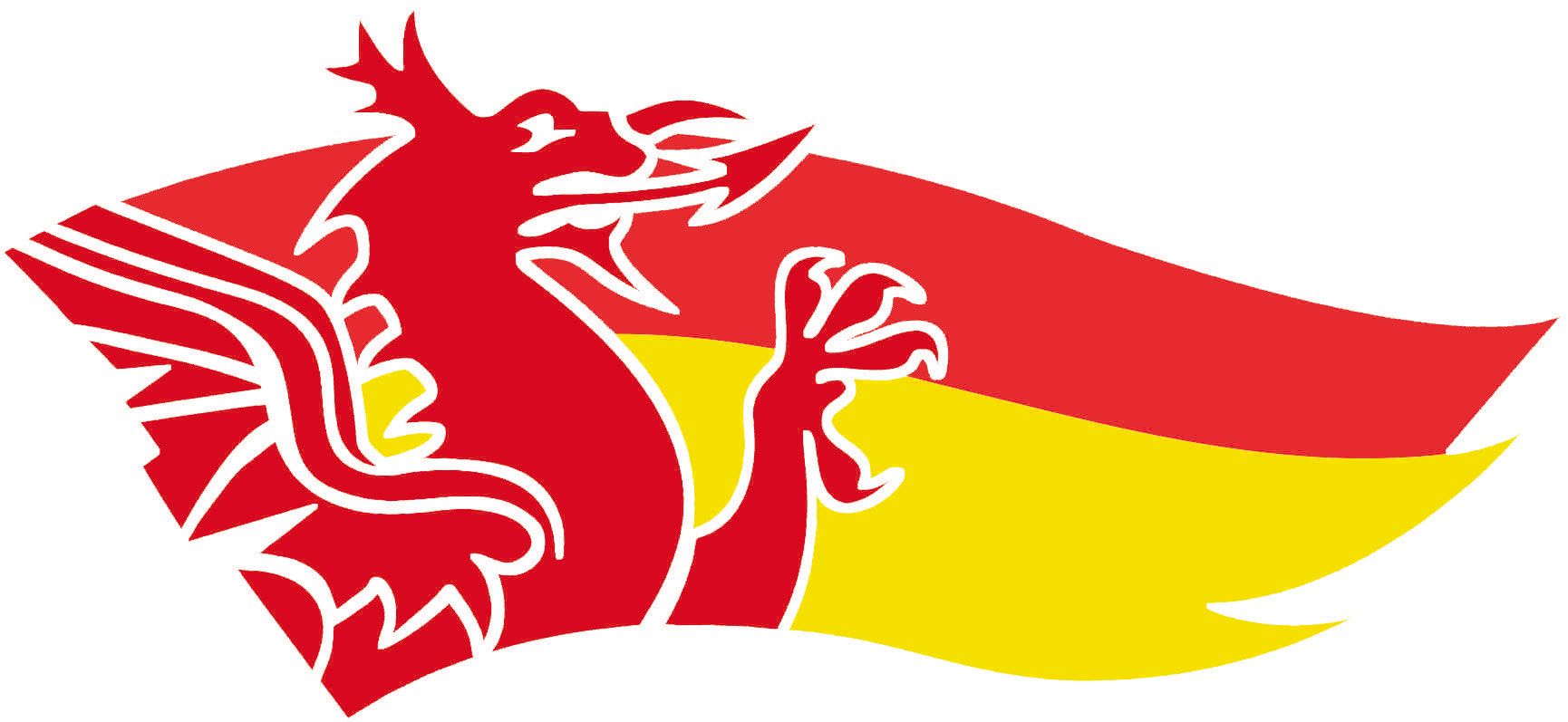RESCUES
In this section you will:
- Understand and implement different rescue techniques.
- Understand and implement different casualty pick-ups.
- Understand and implement casualty recovery to shore.
Rescues
Tube Rescue
If a casualty is close to rocks or in a dangerous position that may be a risk to the IRB and the coxswain may direct the crewperson to use the rescue tube and fins (optional) to perform a tube rescue.
If a casualty is close to rocks or in a dangerous position that may be a risk to the IRB and the coxswain may direct the crewperson to use the rescue tube and fins (optional) to perform a tube rescue.
- The coxswain pilots the IRB to drop the crewperson as close as possible to the casualty.
- The crewperson exits the IRB (when safe to do so), swims to the person/people in difficulty and individually or as a group returns them to the IRB, which will be standing off in a safe position.
- The crewman clips the rescue tube around the casualty and swims back the the IRB. If there are a number of casualties the rescue tube can be held onto by the casualties and used to aid swimming to the IRB.
- The crewperson then climbs back into the boat and assists the coxswain with the pick up of the casualty(ies).
In this case a 'bounce/tea bag' pick-up is used.
Pick Ups
There are three different pick ups that are used in Wales.
1. Single Arm Consious Pick Up.
2. Bounce/Tea Bag Pick Up.
3. Spin Pick Up.
The coxswain should determine which casualty pick up method is best used by conducting a dynamic risk assessment, with the upmost consideration to the surf conditions.
1. Single Arm Consious Pick Up.
2. Bounce/Tea Bag Pick Up.
3. Spin Pick Up.
The coxswain should determine which casualty pick up method is best used by conducting a dynamic risk assessment, with the upmost consideration to the surf conditions.
Single Arm Consious Pick Up
Can only be used on a concious alert casualty.
Can only be used on a concious alert casualty.
- When approaching the casualty, the crewperson should shout ‘give me your left hand!’
- They will then lean toward the port side of the bow, moving the left hand from the crewperson handle to the middle of the bow rope.
- They should then grasp the left wrist of the casualty and proceed to lift and swing the casualty into the boat whilst returning back to a sitting position. Whilst doing this, the coxswain will be turning the IRB toward port side in order to lower the port sponson, making it easier for the crewperson to retrieve the casualty
Bounce/Tea Bag Pick Up
Unconscious/larger casualties.
Unconscious/larger casualties.
- The crewperson turns the casualty so that his/her back is facing the port sponson. - (the coxswain will then put the motor into neutral and assist with the lift). Both coxswain and crewperson then stand and lean on the sponson grasping the casualty’s wrist and armpit under shoulder.
- The coxswain will then decide on the casualty’s size, how many ‘dunks’ they will do to build up momentum for the lift and inform the crewperson.
- On the coxswain’s command the coxswain and crewperson will simultaneously ‘dunk’ and lift the casualty so that they are sitting on the sponson (supported with coxswain and crewperson). The coxswain will then go back to attending the motor while the crewperson will reach under the arms of the casualty and lie him/her back in the boat with head tilt applied to the casualty.
Spin Pick Up
Conscious casualties.
Conscious casualties.
- When approaching the casualty, the coxswain should ensure that the bow of the IRB is pointing out to sea. The crewperson should kneel on the floor of the IRB facing the port pontoon. He/she should then tuck his/her feet between the floor board and the tube on the starboard side The crewperson should then shout to the casualty ‘give me your hands, ‘give me your hands! Checking for a response.
- The crewperson then grabs the casualties wrist and spins them anti-clockwise, lifting the casualty’s right arm up so it goes over the crewperson’s right arm. The crewperson should then place their left arm under the casualty’s left arm.
- The crewperson then ‘hops’ up so that their knees are on the port sponson.
Finally the crewperson should lift and use his/her body weight to fall towards the bow of the IRB ( the coxswain can assist with the swinging in the casualty’s legs) and apply a head tilt to the casualty (if unconscious) whilst returning to shore.
Returning to Shore and Carrying a Casualty
Returning Casualty to Shore
When returning to shore with a casualty, the crewperson is normally occupied with casualty care. The coxswain role is to contact the patrol team or emergency services by VHF radio advising that they are coming to shore with a casualty and need assistance to evacuate the casualty. When arriving at the beach the coxswain must try and get the boat as shallow as possible. This will reduce any movement and rocking of the boat.
When returning to shore with a casualty, the crewperson is normally occupied with casualty care. The coxswain role is to contact the patrol team or emergency services by VHF radio advising that they are coming to shore with a casualty and need assistance to evacuate the casualty. When arriving at the beach the coxswain must try and get the boat as shallow as possible. This will reduce any movement and rocking of the boat.
Unconcious Casualty Carry
When the motor is turned off, the coxswain should lift up the tiller arm so it doesn’t restrict the movement of the coxswain in the lift and evacuation procedure.
When the motor is turned off, the coxswain should lift up the tiller arm so it doesn’t restrict the movement of the coxswain in the lift and evacuation procedure.
- The coxswain places the casualty’s legs to the side of the IRB that they wish to exit. The coxswain then reaches forward and grasps the casualty’s arms.
- On the crewperson’s command, the coxswain slowly pulls the casualty into a sitting position, enabling the crewperson to manoeuvre to his/her feet. (During all of this the crewperson maintains a head tilt on the casualty).
- The crewperson then squats behind the casualty, preparing to lift them onto the sponson (ensure that the crewperson follows manual handling techniques).
- Once the crewperson is in position the coxswain slowly releases the arms of the casualty in order to grasp the legs of the casualty and prepare to lift. The coxswain should have their hands positioned above the knees of the casualty and hold the casualty’s legs together in order to lift to the beach facing sponson.
- On the crewperson’s command the coxswain and crewperson will simultaneously lift the casualty onto the sponson. (the crewperson gives command ‘Ready, Brace, Lift’).
- Once the casualty is on the sponson, the coxswain will secure the casualty above the knees to prevent them sliding off the sponson whilst the crew person exits the IRB.
- Then the crewperson gives instructions ‘Ready, Brace, Lift’ - coxswain exits boat on crew person command..
- The coxswain and crewperson then carry the casualty up the beach to a safe area (the coxswain will be watching behind the crewperson informing of any hazards behind them).
- Once at a safe place, the crewperson will instruct the coxswain to lower the casualty onto the sand (‘Ready, Brace, Lower’).
- The crewperson will still be supporting the casualty’s head and keeping the airway open while the coxswain takes control of the patient’s arms and slowly lowers them to the sand.Just before the patient’s head touches the sand, the crewperson will scoop a small amount of sand from under the head, creating a pit to ensure the casualty’s head is secure and assists in maintaining an open airway.
- The crewperson should then assess the casualty and for the following:
- Breathing – place casualty in recovery position (using natural slope of the beach).
- Not breathing – begin CPR.
- If the coxswain or anyone else has not already, they should seek clarification that emergency services are on route. Ensuring use of the three P’s to pass on accurate information: Position. Problem and People.

